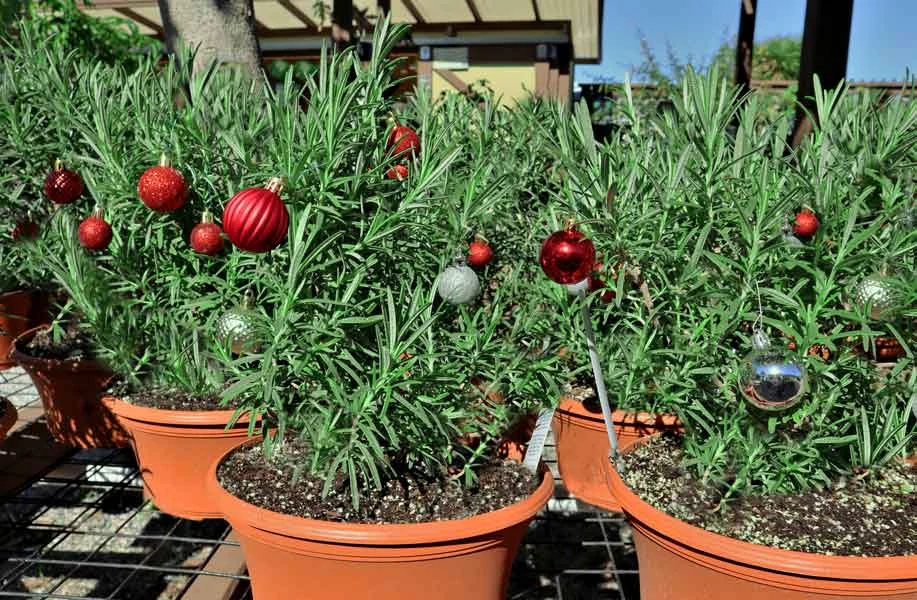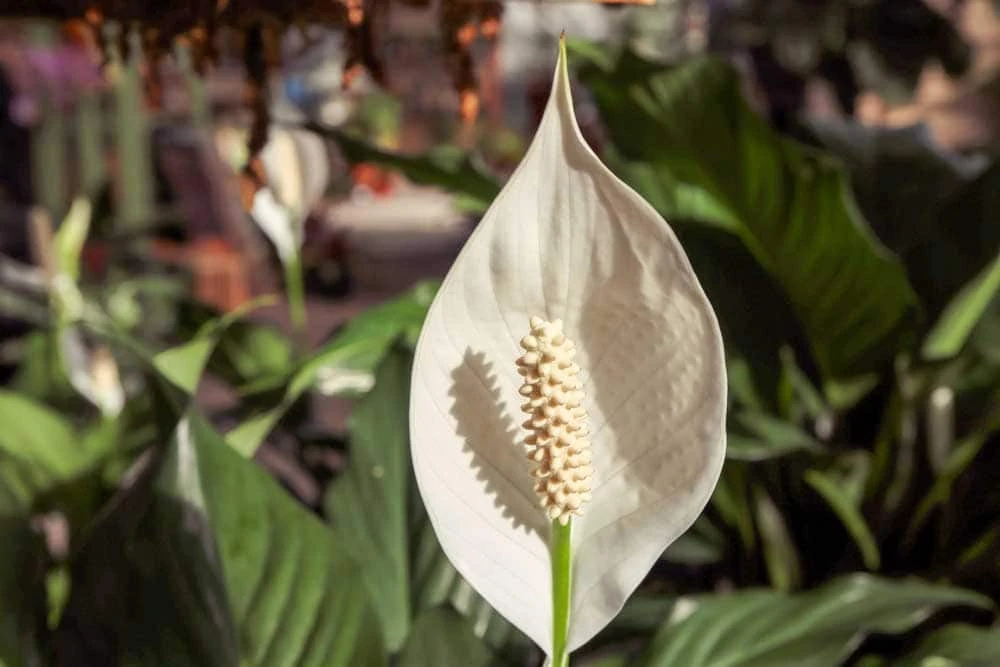by Amanda Rose Newton
Throughout history, plants have played an integral role in just about every celebration and this is especially the case for the winter holidays. Whether you celebrate Christmas, Hanukah, Kwanzaa, or the Solstice, there are many plant traditions for the holiday season.
Last week on the blog we featured poinsettias, the most purchased plant of the holiday season. If you are interested in doing something to set yourself apart from the crowd this year, consider a few of the lesser-known plants of the season.
Rosemary
Woody, herbal, and fragrant, rosemary is a welcome addition to any kitchen table. Around this time of year, it is not unusual to find rosemary trimmed up for the holidays in a tree form, making it an ideal stand-in for those without space for a true Christmas tree or Hanukah bush.

In Medieval times, rosemary was spread on the floor in anticipation of holiday guests crushing the delicate leaves as they crossed the threshold. The fragrance was believed to ward off any evil spirits that may be lurking nearby and welcome in the good. After 2020, we could all use some banishing of negativity and embracing positivity for the new year.
Holly
Holly is right up there with poinsettias as a plant truly thought of as a holiday staple. Aside from decking the halls at Christmas, it has been a staple of Solstice celebrations worldwide. Its year-round green foliage signifies eternal life, which serves as a great way to welcome in the new year and the promise of growth.
Ivy
Like holly, ivy is also a traditional choice for decking the halls. Since it is green year-round, it serves as another reminder that a new year is the chance for rebirth and new life. In Greek mythology, ivy was the plant of choice for Dionysus, the god of wine and festivity, making ivy fitting for year’s end celebrations.
Amaryllis
The bright red blooms of amaryllis against the deep green foliage screams Christmas and are right at home as a table centerpiece.
They have an elegant nature to them and are traditionally associated with the holidays because that is when they are at their festive best. The name is another reference to mythology, this time the unlucky-in-love maiden of the same name. She pierced the heart of Alteo with a golden arrow and visited his cottage daily. Blood fell from the sky onto the path to the cottage, and on the thirtieth day, those droplets were replaced with beautiful red flowers. Alteo was so enamored with the vivacious flowers and, thus, Amaryllis too. Amaryllis is a reminder to celebrate the time with loved ones and to appreciate the beauty of the world around us.
Fruits of the Earth
Kwanzaa, the celebration of African heritage, starts the 21st and means “first fruits”. Fruits (and crops generally) take center stage in celebrations and are often displayed as a collection of fruits, vegetables, and nuts to represent the “fruits” of a year of labor. Offering food to others at the holidays is a great way to show your appreciation for the hard work and contributions we all make. This holiday season, consider supporting local farmers by purchasing fresh fruits and vegetables from the farmer’s market to celebrate the close of the year.
Peppermint
While readily available year-round, peppermint flavored lattes, candy, and desserts have their moment during the holiday season. The iconic candy cane dates to the 1600s where Germans would give them to children to keep them busy during long Christmas church services. Peppermint has that unique cooling quality that is a match for the cold snap felt during the holiday season. Mint is one of the easiest herbs to grow and comes in flavored varieties ranging from pineapple to chocolate. It makes an attractive gift and can readily grow in a sunlit windowsill. Use caution when pairing it with other herbs or planting in-ground as, just like as a flavoring, it tends to overpower everything else.
Olive Trees
Olive trees are one of the few trees that grow all over Israel and has become a symbol of unity for the country. Olive oil is used in many holidays, with Hanukah relying on it to cook delicious latkes among other traditional celebration foods. The branches of the olive tree are associated with peace offerings in many cultures and are often given to offer well-wishes for the new year to come. An olive tree can be a symbol of this beautiful idea year-round and does excellent in our climate. If you need a simple, last-minute gift, the farmer’s market offers an array of flavored olive oils for holiday meal preparations and beyond.
Peace Lily
Offerings of peace for the year is a lovely sentiment and one that is embraced by many cultures. The peace lily is especially fitting this year as we are spending more time indoors and at home. Robust as a houseplant, it will long last long after the holidays are over and are a great choice for a friend without a yard.

Like all houseplants, the secret to success is mastering the art of proper watering. Ensure that your peace lily really needs that drink by soil feel and texture.
Christmas Cactus
Last but not least is the humble Christmas cactus (Shlumbergera spp.), which are native to Brazil. Like orchids, they are epiphytes and grow best on other plants where they can properly harness sunlight to complete photosynthesis. Their name comes from the fact that they put on their showy blooms just in time for the holiday celebrations. Easy to grow, even for a new plant parent, the Christmas cactus does just fine indoors or out (pending temperatures do not dip too low). Coming in colors ranging from pink to yellow, your Christmas cactus will make a fine Easter cactus when spring draws near.
With celebrations being so different this year, bring in some familiarity in the form of foliage and flowers. The scents, colors, and flavors will make the season brighter for all. As you finish your holiday shopping, consider sending a loved one a plant to foster hope for a peaceful, prosperous new year.


